
2022 Mahindra Scorpio N First Drive: Perfect Middle Ground?
- Jun 30, 2022
- Views : 7067

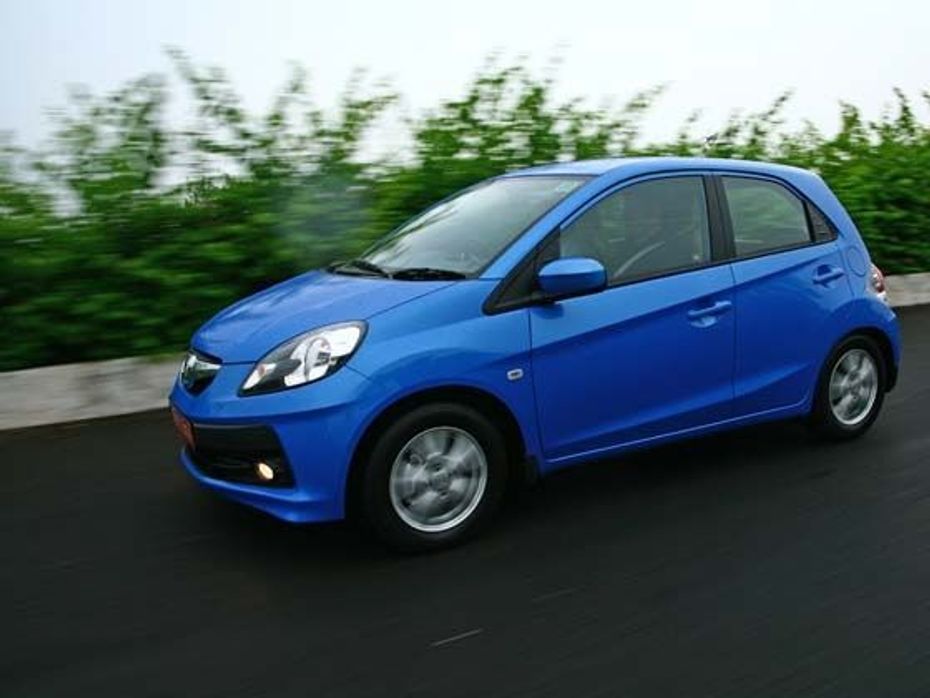
It takes a lot to build a small car that is destined to fight it out in the cut throat premium hatchback segment in India. The wish list of customers for this particular segment lies over such a wide range of choices and options that any one car maker will find it a daunting task to try and actually cater to fulfilling every single need. The result is there for all of us to see and each manufacturer that has stepped into this segment has ushered in a unique selling point of their own. Some ideas have worked, some have been a little lackluster, however the growing trend is that the premium hatchback marketplace is ever evolving and at the same time it is getting crowded as more and more manufacturers are looking at getting their hands on a slice of the pie for this is the largest selling segment in India. It’s good business sense to have a product in this segment, especially when you are a brand that caters to the masses. Honda has known all of this only too well and finally they are ready with their small mass car arsenal, the Honda Brio (pronounced: Br-ee-oo).
The Brio is a car that has been conceived for markets such as India. In fact a lot of the preliminary studies for the car have been carried out in India. The story started a few years back when Honda conducted various surveys across the country in order to gauge the audience requirement as well as gain a better understanding on what exactly they will have to build from scratch. Representatives went across the country and met with a lot of people who fit the demographic requirement of wanting to own a premium hatchback.
They also conducted studies of their own in terms of buying patterns as well as a deeper look at the lifestyles of potential customers. Apart from that, they also checked out the potential competition and drove those cars, understood their place in the market and more importantly, Honda also checked those vehicles to figure out what are the common problem areas that customers find with those models. Post this detailed study, Honda drafted the requirements of what the Brio should be. In fact the study boiled down to three core needs of the Indian customer, which included the need to express themselves, the need to ferry around family safely and the need to be frugal. These needs were further drafted into the core values that a Honda small car should possess, namely, a strong presence, space and low fuel consumption.
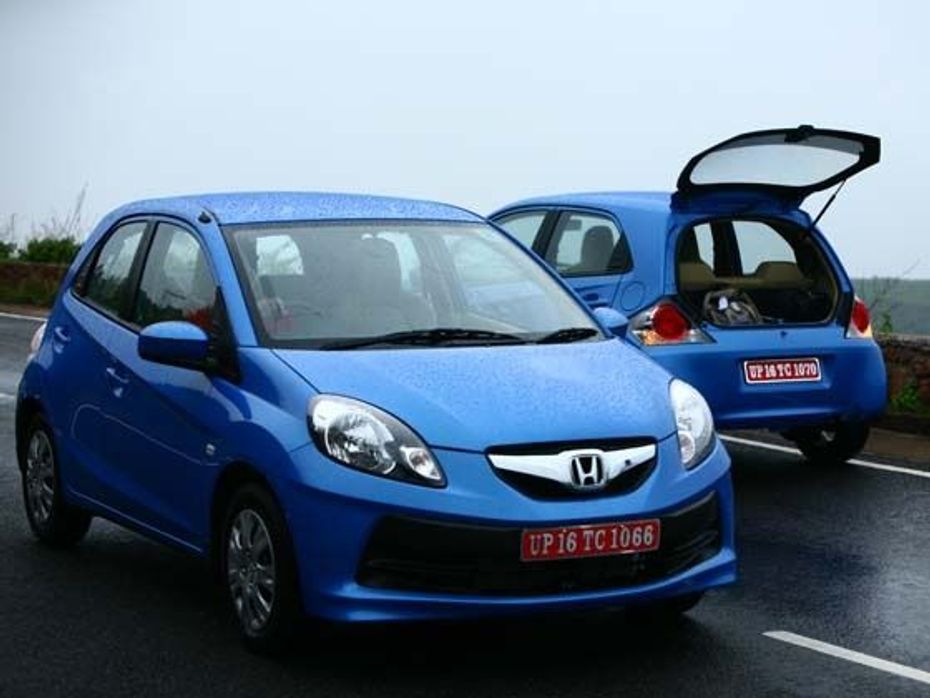
Armed with these traits, Honda set out to make the Brio a vehicle that encompassed advance design, efficient packaging and intelligent performance all for the price that would be competitive in the Indian context. Now, building a small car that covers these elements as well as the inherent need to make it a quality product that fits in well with the Honda brand name might not seem like a tough task, however when you bring in the element of the cut throat pricing war that exists in this segment and the need for Honda to get the pricing spot on, then the development of this vehicle takes on a challenge of its own. In hindsight, this reason could have been why Honda has taken its time in entering the mass product market, however the company’s penchant to get things right seems to have prevailed over the introduction of the Brio, especially since they burnt their fingers with the introduction of the Jazz at such an exorbitant price point. The Brio is what Honda thinks a small car should be; every element in building this car has been scrutinized. It’s the company’s translation of the market requirement and guided by the predetermined core values, the Brio, in essence, has been designed to pack in all the elements desired by potential customers, or as Honda claims, it’s a Micro Metropolitan Jet.
Read about the special coverage on the Honda Brio here
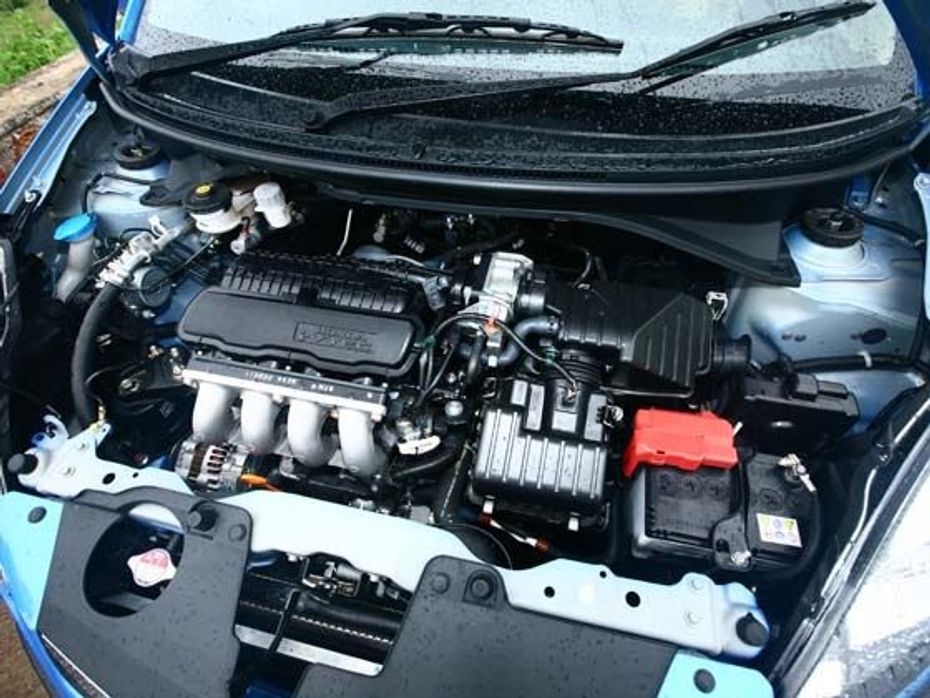
The first value pillar laid down for the Brio was a strong presence. The designers have worked hard to give this little car a well proportioned stance that marries in many design cues associated with larger Honda products. According to the designers, the Brio is essentially based on a double triangle theme. The top triangle lies inverted and adds a flair of sleek dynamism, while the bottom upright triangle ushers in the sporty stance. Together these elements give the car a stance that signifies forward motion. With an underlying theme of active dynamism, the Brio had to have the right elements in place to give it a significantly higher visual appeal than its closest competitors. In doing so, the car has received a wider stance and the elements such as the sculpted hood, large headlights that flow into the body lines, large Honda logo and the flared wheel arcs paint a uniform picture in the minds eye of a small, yet purposefully built car. Viewed from the side, the small car proportions come into play, yet the high shoulder line and a lower crease help create a break in what could have been a boxy design and instead you get a very clear look at that forward motion stance.
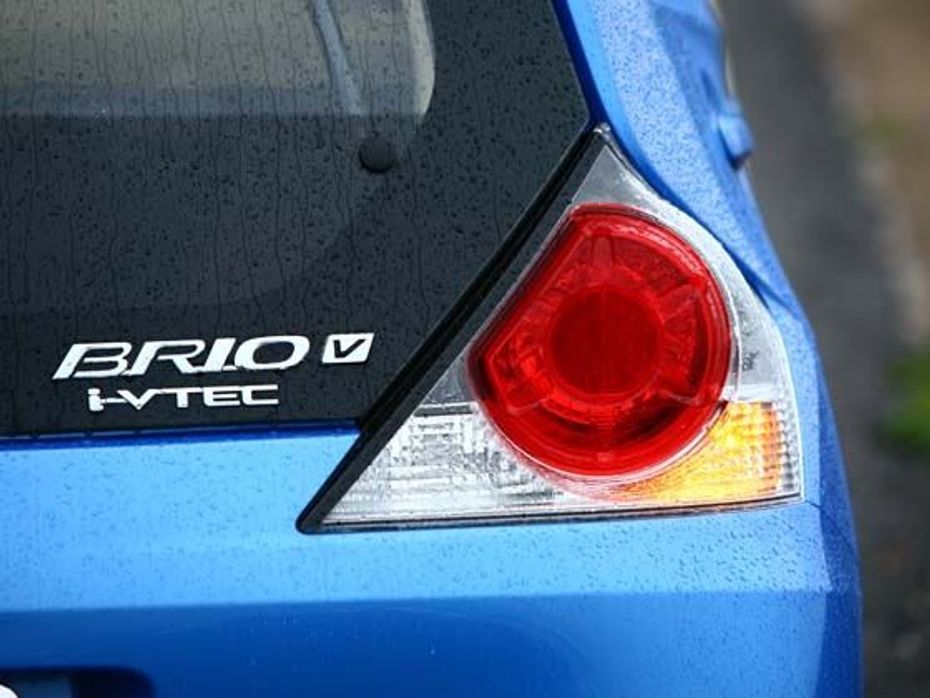
The rear is where the designers have really turned to using elements rather than a design flair to spruce up the design and complete the exterior package. The entire hatch is glass. The large glass back immediately draws you away from the fact that the rear is essentially just plain flat. It works to really bring out the open ended design that the double triangle theme creates. Flanking the glass at the rear are the rear cluster lights which take their inspiration from the Jazz. Other elements that add to the exterior charm of the car are the aerodynamically sculpted ORVMs, a small integrated rear spoiler and the specially crafted alloys shod with 175/65 R 14 rubber that have been designed to be more aerodynamic. The exterior package has been executed very well and the Brio is bound to stand out in a crowd.
Read about the special coverage on the Honda Brio here
The interiors on the Brio are also a result of findings from the extensive survey conducted in India and parts of Asia. The research showed a strong trend towards the need of space and safety and this was the basis of the second value pillar that is intrinsic to the Brio. Following the Honda principle of man maximum-machine minimum, the little Brio is actually rather spacious on the inside. Effective packaging has freed up a lot of space and tall people can fit in rather comfortably even on the rear bench. It’s comparable to a magic trick small on the outside but large on the inside and that is just how well Honda has managed to free up the space on the inside which is definitely going to be one of the biggest USPs with the Brio. Apart from that, the interiors boast of quality plastics, though the color choice of dark brown for the console and a light beige for the glove box might not gel too well aesthetically, the plastics themselves are of a quality that is above what one would expect in this segment.

The console is neatly crafted and the cockpit area is concentrated around the driver to offer an engaging driving experience. The triple analog 3D meters are a nice touch and add an element of glamour. In terms of equipment, the Brio comes with a double DIN integrated audio system which boasts of an AUX and USB connectivity. The air-conditioning controls are simple; however the unit itself is very effective at cooling the car down. The other up market touch to the car are the steering mounted controls, which are a neat feature as well as help in terms of safety as the driver doesn’t get distracted by having to fidget with controls on the console. The front seats with integrated headrests offer a sporty touch and the fabric used on the seats is also rather nice. Despite being a small car built to a price, one cannot but feel that they are definitely inside a Honda, that is actually sums up the fact that the interiors have been executed keeping in mind Honda’s DNA of quality comfort.
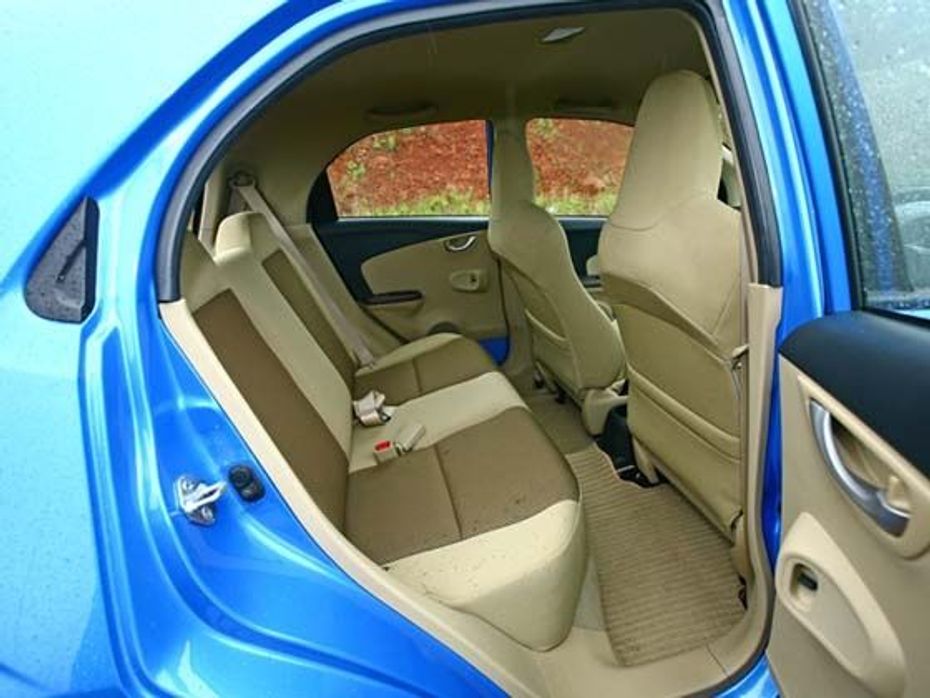
As mentioned earlier, safety is also a concern that had to be addressed and Honda is offering the Brio with dual SRS front airbags, seatbelts with pretensioners, disc brakes, ABS and electronic brake distribution (EBD). The driver’s airbag is the latest i-SRS airbag system with continuously staged inflation which can accommodate a number of occupant positions and potential collision situations. It stays open longer and helps mitigate injuries even better. Further to this, the front bonnet construction and bumper have been designed to mitigate injury in case of hitting a pedestrian. In terms of body construction, the Brio incorporates Honda’s G-Force Control (G-Con) technology that helps with driving performance, ride comfort and safety. The construction of the body utilizes extensive usage of high tensile steel in key areas of the frame which help in offering a rigid yet light body. In fact the Honda Brio weighs in only at 930 kilograms, but offers a very strong structure. The Brio has passed the Japanese crash test norms which are significantly higher than the European norms, and that is definitely an achievement for a small hatchback.
Read about the special coverage on the Honda Brio here
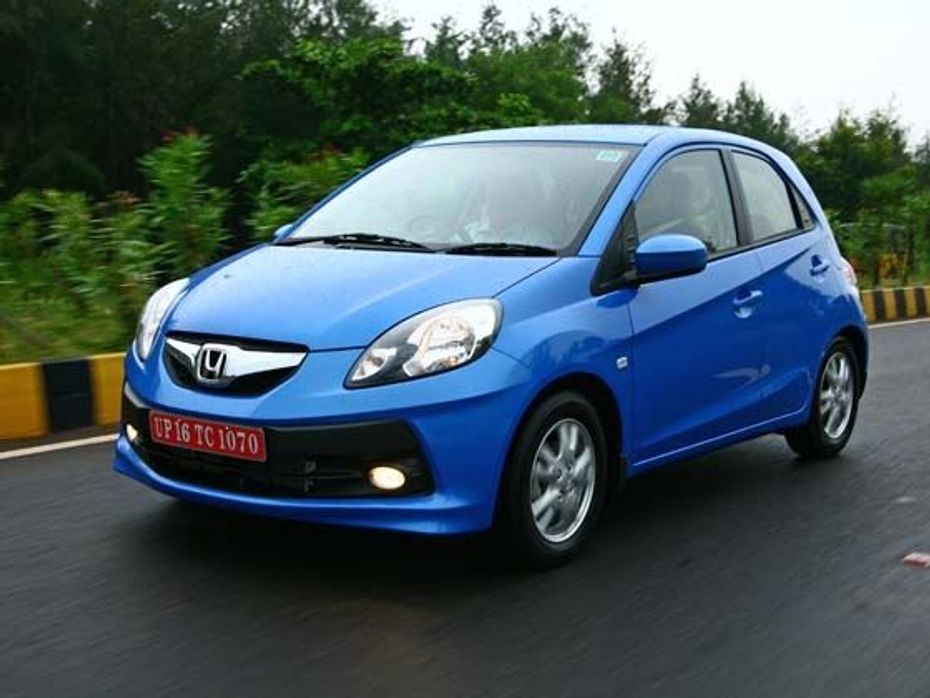
Having taken the efforts in terms of car design, space, features and safety, it only made sense to power the Honda with a tech savvy motor. Under the hood of the Brio is a 1198cc i-VTEC petrol unit that makes 88PS @ 6000 rpm and churns out a decent 109Nm of torque @ 4600 rpm. This unit is based on the same motor that does duty in the Honda Jazz; however it has been revised for the Brio. The 5 speed gear box also boasts of revised ratios which capitalize on the new state of tune and offer a rather engaging drive experience. The motor is smooth, extremely refined and the only grouse we could find with the car was that it had to be revved hard while tackling inclines. Having said that the i-VTEC motor is a high revving engine and does need to hit those rpms in order to offer the benefits it’s designed for. Overall it’s a great driving experience, but what is equally important is the fact that the engine is a frugal unit and this brings me to the third value pillar of the Brio, namely, efficiency. With an ARAI claimed figure of 18.4 kilometers to the litre, the Brio is definitely efficient. Above that, Honda has incorporated a little ‘ECO’ light on the dash which allows the driver to tune their driving to a more economical one and gain the best out of this vehicle. On the other hand, the i-VTEC motor also offers a fair level of spirited driving that fits in with the sporty angle that the car portrays.
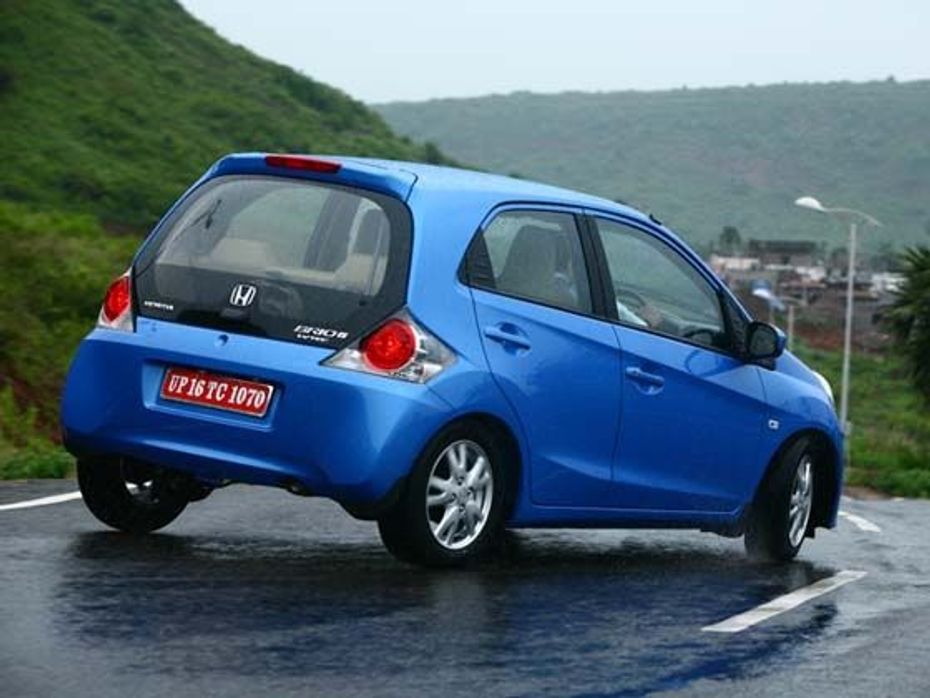
In terms of driving behavior, the little Brio is a charmer on four wheels. The light electronic power steering is a boon in city traffic, yet offers a fair level of feedback which is essential on a more spirited drive. The Brio also boasts of a 4.5 meter turning radius, which is great for our narrow roads, and usually tight driving circumstances. Ride quality has also been addressed and the McPherson struts up front and H shaped torsion beam at the rear do their duty rather well in soaking in the bumps and keeping the passengers comfortable. Despite being a comfortable ride, there has been no real compromise on handling. Honda is a master at offering both and this gene shines through on the Brio as well.
With the Honda Brio, there is no doubting the fact that Honda Siel has put all their cards on the table. This car has been purposefully built for the Indian audience and from the looks of it; Honda has addressed each and every issue in typical Honda fashion. They have been rigorous in their approach and to further ensure that they get things right, the Brio also boasts of a high level of Indian components as opposed to importing items which could result in a price increase. On one hand, the Brio had to live up to being a Honda and on the other it had to cater to a very tough price point. Yes, it does have an Achilles heel in the lack of some small but vital components such as a rear defogger and rear wiper, but overall this is a car that not only has the brand name but the right elements to really kick up a storm in its segment. Building the Brio was a challenge, and Honda addressed each need with dedication. It goes without saying that pricing the Brio right is the key to its success for that is the only element that could keep the Brio from making it to victory lane.
Read about the special coverage on the Honda Brio here

2022 Mahindra Scorpio N First Drive: Perfect Middle Ground?

2024 Hyundai Creta Facelift vs Rivals: Which Compact SUV Shines On...

Hyundai Creta 2024 Review: First Drive
 Mahindra Scorpio N
Mahindra Scorpio N
 Royal Enfield Hunter 350
Royal Enfield Hunter 350
 Toyota Fortuner
Toyota Fortuner
 Hyundai Creta
Hyundai Creta
 Royal Enfield Classic 350
Royal Enfield Classic 350
India's largest automotive community
 Maruti Brezza
Rs. 8.34 Lakh
Maruti Brezza
Rs. 8.34 Lakh
 Maruti FRONX
Rs. 7.51 Lakh
Maruti FRONX
Rs. 7.51 Lakh
 Mahindra Scorpio
Rs. 13.61 Lakh
Mahindra Scorpio
Rs. 13.61 Lakh
 Maruti Grand Vitara
Rs. 10.99 Lakh
Maruti Grand Vitara
Rs. 10.99 Lakh
 Toyota Innova Crysta
Rs. 19.99 Lakh
Toyota Innova Crysta
Rs. 19.99 Lakh